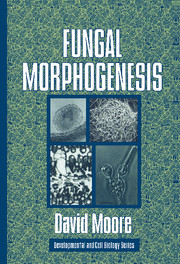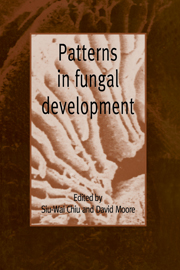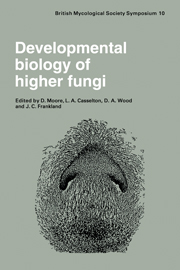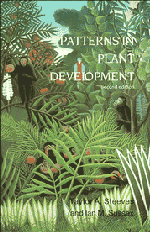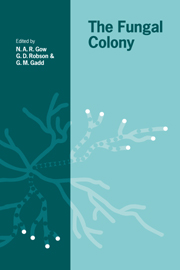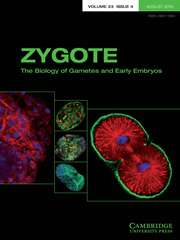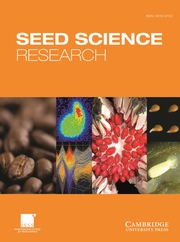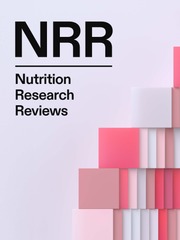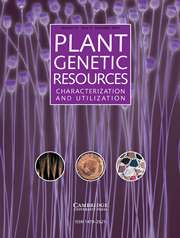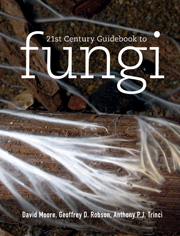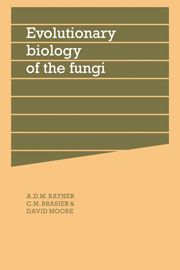Fungal Morphogenesis
Fungal Morphogenesis brings together in one book, for the first time, the full scope of fungal developmental biology. The book provides a coherent account of the subject and puts forward ideas that can provide a basis for future research. Throughout, the author blends together physiological, biochemical, structural and molecular descriptions within an evolutionary framework. Sufficient information is provided about fungal biology to give the reader a rounded view of the mycological context within which fungal morphogenesis is played out, without obscuring the broader biological significance. The author is careful to avoid jargon and demystifies technical terms. Written by one of the few people with the necessary breadth of research expertise to deal authoritatively with the wide range of topics presented, this book will appeal to developmental and cell biologists, microbiologists, and geneticists.
- Written by a leading authority in field of fungal developmental biology
- Provides coherent account which will be the basis for research in the future
- Reader with knowledge of only basic biology will be able to appreciate fungal morphogenesis
Reviews & endorsements
"This text covers the full scope of fungal developmental biology and is a readable and thorough account of a kingdom rarely studied by developmental biologists." Molecular Reproduction and Development
"Will be useful to all students of fungi and essential to researchers, besides being written in a style that will benefit cell biologists and microbiologists...A landmark treatise on fungi and a principal source of collected information for some time to come on all aspects of developmental biology. Extensive list of references; well illustrated throughout. Upper-division undergraduates through professionals." Choice
"An excellent overview as a deep insight in this matter which will surely satisfy all specialists in this field." Cellular & Molecular Biology
"Moore's synthesis is a tour de force. It is rare to find a single author work that covers such a wide breadth of topics with such a pleasing combination of knowledge and eloquence...All developmental mycologists should own a desk copy of Fungal Morphogenesis and all science librarians should be alerted to order a copy for their collections." Inoculum
Product details
September 1998Hardback
9780521552950
486 pages
229 × 152 × 32 mm
0.88kg
118 b/w illus. 23 tables
Available
Table of Contents
- Preface
- 1. Fungi: a place in time and space
- 1.1. Fungal lifestyle
- 1.2. The essential nature of fungi
- 1.3. Evolutionary origins
- 1.4. Evidence from fossils
- 1.5. Origin of development
- 1.6. Evolution within Kingdom Fungi
- 1.7. Horizontal transfer of genetic information
- 1.8. Comparing and combining
- 2. Hyphal growth
- 2.1. Fungal cells
- 2.2. Hyphal tip extension
- 2.3. Septation
- 2.4. Branching
- 2.5. Growth kinetics
- 2.6. Dynamic boundaries
- 3. Metabolism and biochemistry of hyphal systems
- 3.1. Nutrients in nature
- 3.2. Extracellular polymer-degrading enzymes
- 3.3. Production, location, regulation and use of degradative enzymes
- 3.4. The menu of basic nutrients
- 3.5. The wall and membrane as barriers
- 3.6. The flow of solutes
- 3.7. Transport strategy
- 3.8. Water relations
- 3.9. Intermediary metabolism
- 3.10. Carbon metabolism
- 3.11. Fat catabolism
- 3.12. Nitrogen metabolism
- 3.13. Secondary metabolism
- 4. Physiological factors favoring morphogenesis
- 4.1. Nutrition
- 4.2. Adaptations of metabolism
- 4.3. Environmental variables
- 5. The genetic component of hyphal differentiation
- 5.1. Nuclear divisions
- 5.2. Sexuality in fungi
- 5.3. Shape and form in yeasts and hyphae
- 5.4. Sexual reproductive structures
- 5.5. Overview
- 6. Development of form
- 6.1. Initiation of structures
- 6.2. Cell differentiation
- 6.3. Tissue domains
- 6.4. Strategies of basidiomycete fruiting
- 6.5. Commitment, regeneration and senescence
- 6.6. Degeneration, senescence and death
- 7. The keys to form and structure
- 7.1. The nature of morphogenetic control
- 7.2. Fungal morphogenesis
- References
- Index.

